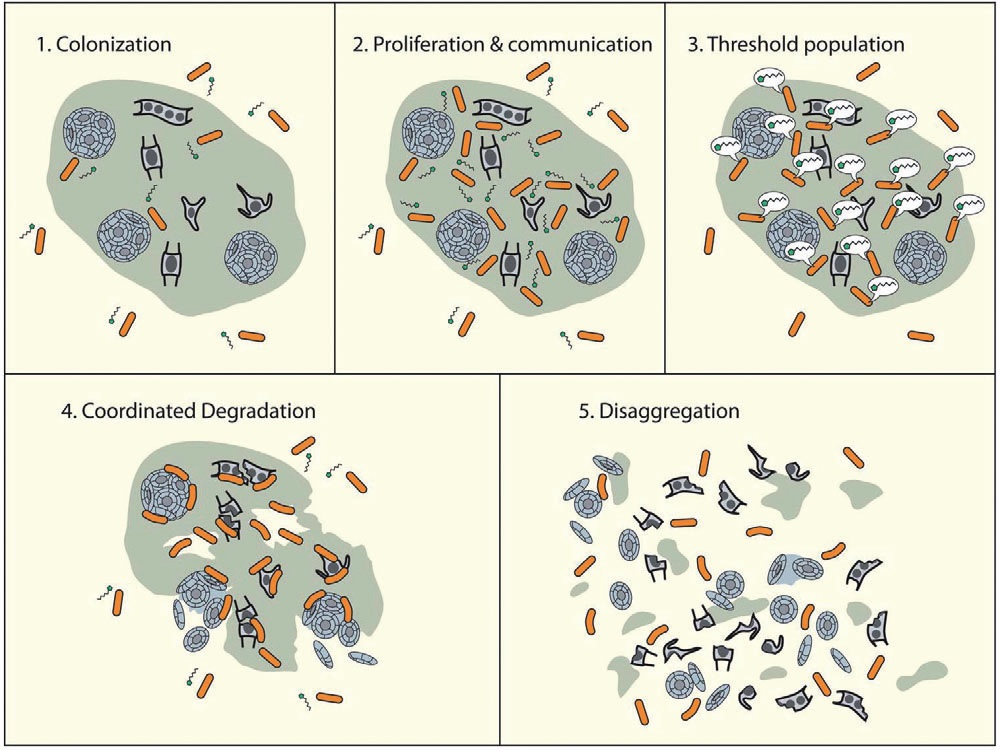Particulate organic carbon (or POC) is an important factor in the ocean’s carbon cycle. When these tiny particles hit the water, they sink and attract bacteria. These bacteria can feed on the particles, releasing carbon into shallow waters and the atmosphere.
A new study has found that bacteria communicate about whether or not to begin feeding on the particles through quorum sensing (QS), simply put, a process where bacteria release signaling molecules, which, in turn can influence the activity of other bacteria. Or, in the authors’ words:
Many bacteria use a cell-density dependent signaling system, ‘quorum sensing’ (QS) to coordinate the expression of genes encoding behaviours that benefit cells at high population density (e.g. extracellular hydrolytic enzyme production, luminescence, biofilm formation).
The researchers found that, in the presence of acylated homoserine lactones (or AHLs), well-known bacterial communication molecules, the activity of key hydrolysis enzymes increased, breaking up the POC particles into smaller bits, thereby releasing carbon (for an illustration of the process, see figure 1). This supports the hypothesis that AHL-based quorum sensing might contribute to the variability in the digestion of sinking POC.

Figure 1: Illustration of QS-mediated increases in hydrolytic enzymes and the subsequent disaggregation of POC.
(Source: Hmelo, Miner and Van Mooy, 2011)
This basically means that bacterial communication could lead to less carbon being drawn from the air and transferred to the bottom of the ocean from where it cannot easily return to the atmosphere.
The authors conclude:
Our results suggest that QS is a heretofore unexplored molecular mechanism that could impact the flux of sinking POC in the world’s oceans. We suggest that this variability in organic matter hydrolysis caused by AHL-based QS may someday be incorporated into carbon cycle models to better capture spatial and temporal variability in POC flux. Additional work is required in order to identify the environmental and biological parameters (e.g. particle composition, bacterial cell density and bacterial community structure) that determine when and where QS might affect sinking POC hydrolysis rates.
Reference
Hmelo, L.R.; Miner, T.J. and Van Mooy, B.A.S. (2011). Possible influence of bacterial quorum sensing on the hydrolysis of sinking particulate organic carbon in marine environments. Environmental Microbiology Reports. Published online 29 September. doi:10.1111/j.1758-2229.2011.00281.x.





Comments